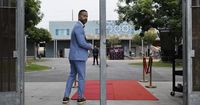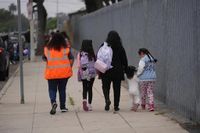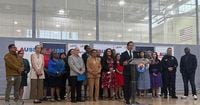On Thursday, August 14, 2025, the Los Angeles Unified School District (LAUSD) opened its doors to more than half a million students and tens of thousands of teachers, but the mood was far from the usual back-to-school buzz. Instead, the city’s schools were gripped by anxiety, with new protocols and a visible show of community protection following a summer marked by aggressive federal immigration raids. The fear that schools might become the next front in the Trump administration’s campaign to increase deportations hung over every classroom, hallway, and playground.
Superintendent Alberto Carvalho, speaking at a press conference earlier in the week, made a pointed plea to immigration authorities: “Hungry children, children in fear, cannot learn well.” Carvalho urged federal agents to refrain from enforcement activity within a two-block radius of any school, starting an hour before classes begin and lasting until an hour after the final bell. The request comes after a particularly alarming incident on August 11, when federal agents detained a 15-year-old boy with disabilities outside Arleta High School in what officials have described as a case of mistaken identity. The boy was released after family members intervened, but the episode sent shockwaves through the community.
According to KABC and NBC News, city and district officials have made it clear that neither the Los Angeles Police Department nor school police are sharing information with federal immigration enforcement agencies. But that assurance hasn’t eased the sense of vulnerability. “This is the exact type of incident that traumatizes our communities; it cannot repeat itself,” Carvalho said. Administrators at two elementary schools had previously denied entry to Department of Homeland Security officials, and agents have been spotted in vehicles outside other campuses.
To help families cope, LAUSD distributed a family preparedness packet that included know-your-rights information, emergency contact updates, and resources for designating a backup caregiver should a parent be detained. The district also offered a compassion fund hotline and expanded its virtual education program, which saw a 7% increase in enrollment compared to last year. “We want no one to stay home as a result of fears,” Carvalho emphasized, noting that the district had rerouted or added bus routes to help children avoid walking on streets where they might encounter immigration agents.
On the ground, the response from educators and community members was nothing short of extraordinary. As Los Angeles Times reported, teacher trainings this year included lessons on how to recognize various types of federal officers who might conduct immigration arrests—or, as one presenter put it, “kidnappings”—and how to distinguish them from bounty hunters or impersonators. “All of the agencies are masked, and all of them refuse to identify themselves, right? That’s what we’ve experienced on the ground,” the presenter stated at a United Teachers Los Angeles union session.
Three distinct tiers of protection were rolled out on the first day of school. The first involved district-organized watch zones around about 100 schools deemed at higher risk due to their large Latino populations, particularly those where older students walk to campus without their parents. The second tier consisted of faculty observers—ideally five to seven per school—tasked with monitoring and reporting any enforcement activity. “People are already patrolling in their cars. Teachers are gonna be showing up and patrolling on foot around the school,” said Ron Gochez, a history teacher and leader in Unión del Barrio. “For us at the high school, it means being vigilant. … If we were to see anything, we’d contact not just our school, but other schools in our immediate neighborhood.”
The third tier was perhaps the most hands-on: community groups, including Unión del Barrio, prepared to rally members at a moment’s notice to provide support—or even, if necessary, to physically obstruct immigration agents, risking arrest themselves. Volunteers, some as old as 78, escorted students and parents within a three-block radius of schools, determined to offer reassurance and safety. “I’m 78 years old. If it happens it happens,” said Diana Holbert, a former children’s pastor, about the risk of arrest.
At Maya Angelou Community High School, students were welcomed with a red carpet and signs reading “Everyone Is Welcome Here” and “This Is a Safe Space for Immigrants.” Bonnie and Haley, two juniors, said the efforts were working: “I feel pretty safe. We’re not super worried.” But for many, the tension was palpable. Ingrid Villeda, a community school coordinator, and her colleague Olga Calacuayo began their day at 6:45 a.m., conducting safety checks around the perimeter of 93rd Street Elementary School, reporting suspicious vehicles to a tip line.
The backdrop to these efforts is a city grappling with the reality that, according to the teachers’ union, around 30,000 LAUSD students are immigrants, and roughly a quarter of them lack legal status. The district, which spans more than two dozen cities, is the second largest in the nation. The specter of deportation is not just a policy debate—it’s a daily, lived fear for thousands of children and their families.
Educators across the region voiced deep concern about the impact of immigration enforcement on student attendance and learning. “Imagine ... leaving your home in the morning and not knowing if your parents or your tío or tía is going to be there when you get back, or your grandparents,” said Pomona Unified School District Superintendent Darren Knowles. Attendance in Pomona was slightly lower than the previous year, a trend echoed in LAUSD, where Superintendent Carvalho said that, despite their best efforts, “some students might not show up the first day.”
For students like Madelyn, a 17-year-old from Central America who spoke to NBC News on condition of anonymity, the fear is very real. “Instead of feeling excited, really what I’m feeling is concern,” she said. “I am very, very scared, and there is a lot of pressure.” Madelyn takes public transportation to school but worries about being targeted because of her skin color. Despite her fears, she remains committed to supporting other immigrant students: “I plan to continue supporting other students who need it very much, even if I feel scared. But I have to be brave.”
School officials have also set up “safe zones” monitored by LAPD and community volunteers to protect undocumented families as they travel to and from campus. The district has contacted at least 10,000 parents and visited over 800 families this summer to provide information about resources, transportation, and legal support. More than 1,000 central and district office staff were deployed to “critical areas” on the first day, and over 100 safe passage and community safety deployments were arranged.
As the academic year gets underway, the LAUSD community is demonstrating resilience and solidarity in the face of daunting challenges. The first day of school in Los Angeles this year was not just about new teachers and sharpened pencils—it was about neighbors watching out for each other, educators stepping up, and families determined to keep hope alive, even as uncertainty lingers outside the classroom gates.



